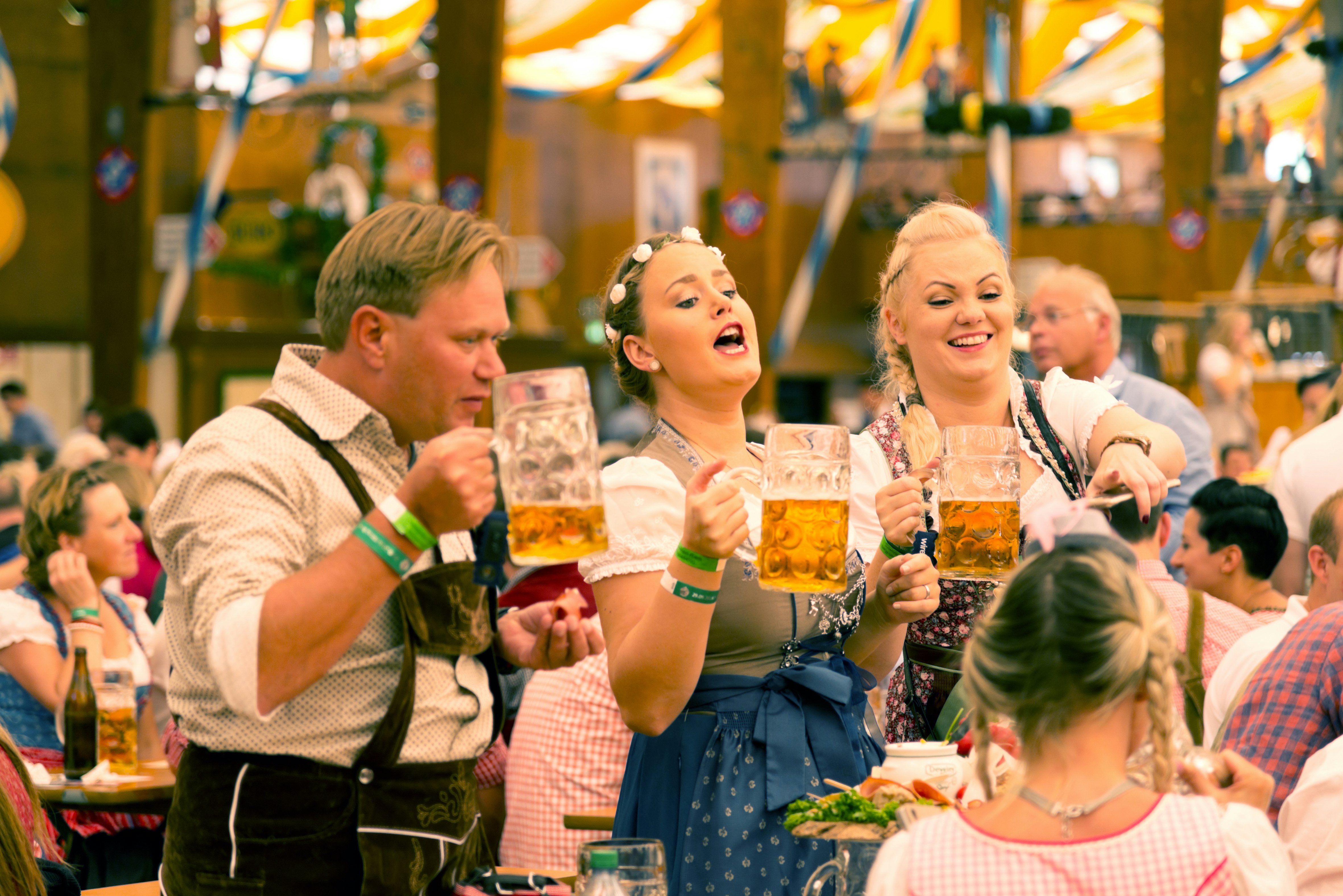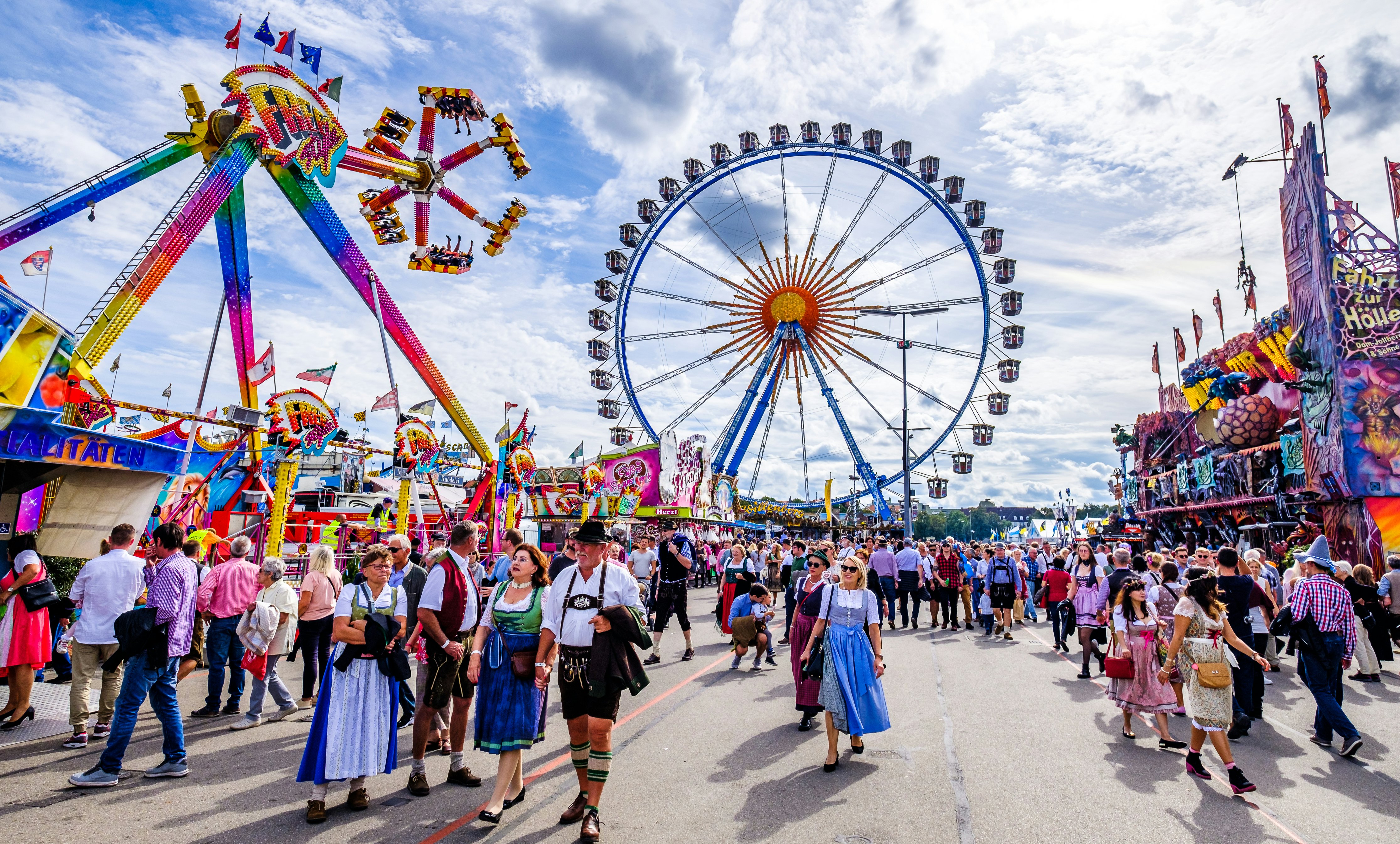
The 30 best countries, cities and regions to visit in 2025
May 8, 2024 • 6 min read

Oktoberfest's Hacker-Pschorr tent is a joy-filled meeting place for singing, dancing and seemingly-endless cold beer © FooTToo / Getty
Oktoberfest once again returns September 21 - October 6, 2024 for 17 days of joyous beer swilling.
Every year, more than seven million thirsty visitors descend on the German city of Munich for a two-and-a-half week celebration featuring parades, fair rides, traditional food and music, and of course, lots of beer.
Oktoberfest can be an exciting event for outsiders to experience Bavarian culture, but it can be hectic and difficult to navigate for the uninitiated, particularly after a few liters of Löwenbräu. Especially this year as more crowds than ever will pack the festival grounds. Don’t fret – we’ve got you covered with this guide to the festival of all festivals.
How I traveled using Germany’s €9 travel pass: my 48-hour itinerary

Oktoberfest began back in 1810 as a series of horse races honoring the marriage of Crown Prince Ludwig and Princess Therese of Saxe-Hildburghausen. It was such a big hit that it became an annual event with more activities popping up every year. It wasn’t until the late 19th century that sausages and beer were served. Nowadays, the keg-tapping and countless meaty morsels on offer are the most recognizable aspect of the event, along with the traditional Bavarian garb.
Traveling to Germany? 6 questions you need to ask before you go

The first thing to mention is the sheer volume of the alcohol – almost 7 million liters of beer are served every year, along with 95,000 liters of wine. Waitresses adorned with the traditional Dirndl and waiters donning Lederhosen ferry giant frothing mugs, called Masskruege, of beer to thirsty attendees. Even this simple act is a spectacle as they are often carrying an unbelievable number at once – the current world record is for 26 full Masskrug!

The second most exciting attraction is the food – Bavarians will typically begin a day at the Oktoberfest with some Weisswurst, a white sausage consisting of veal and bacon meat. Lunch might be half a rotisserie chicken (Hendl), a roasted pork knuckle drowned in gravy (Schweinhaxen), or even more sausages. Throughout the day, visitors who feel the pang of drunken hunger can snack on pretzels, roasted almonds or a traditional shredded pancake dish called Kaiserschmarrn.
Top 10 national parks in Germany

If you can still move after all that beer and food, the festival also has various amusement rides, traditional Bavarian folk music shows, puppet shows and several parades to watch. Regulars have also started a tradition of rolling down a large hill while inebriated. Partake at your own risk.
This Oktoberfest, raise a glass to Germany's Wine Queens

To make sure you don’t make an Arsch of yourself at your first Oktoberfest, follow locals and regular attendee’s simple do’s and don’ts.
Wear the right clothes. Lederhosen and Dirndl are not compulsory, but if you’re going to commit, you should go the whole hog. Wearing your regular clothes won’t get you any unwanted attention, and neither will the traditional garb, but if you show up in a low-quality bachelor-party-style fancy dress costume, you risk offending quite a large number of the festival’s attendees.
Eat before you start drinking. There’s a reason the food served in the tents is so hefty and filling – it can be hard to track how many of those one-litre Masskruege you’re getting through.
Book a table. You’ll have a much nicer experience and you won’t need to wait in the infamously long lines.
Aim for the tents’ side entrances to avoid the lines. You’ll still need to wait, but maybe not as long.
Pay attention to how you tie your Dirndl. There’s a historical code based on the placement of the bow; front-right means you’re married or in a relationship, front-left means you’re single and ready to mingle, and front middle means you’re a virgin. Yes, this is still a thing despite it being the 21st century.
Take cash. There are very few ATMs available, and you can expect to wait a sobering amount of time to withdraw some cash, so you’ll want to have some notes and coins with you. Bear in mind that each beer is likely to cost between €12.60 and €14.90.
Be prepared to hear Angels by Robbie Williams a lot.

No matter how much of a good idea it might seem during the eight airing of Angels, don’t stand on the tables. You don’t want to be on the wrong side of an Oktoberfest security guard.
The Lebkuchenherzen (gingerbread hearts) may look cute, but you’re much better off grabbing some Kaiserschmarrn if you’ve got hankering for something sweet.
Don’t expect change from the wait staff. They have seriously hectic jobs, so any remainder from the cost of your drinks is assumed to be a tip.
Don’t leave it too late to book accommodation. With seven million people in attendance, the rooms are booked up quickly. Camping is another option, or you could consider staying a bit further from the city and commuting to the festival.
After several drinks and sausages, do not visit the bumper cars or amusement rides. This should go without saying, but you won’t want to be strapped into a seat 30 feet in the air when your beer decides to come back up.
Don’t drive. Parking is a nightmare and if you’re planning to sample the region’s beautiful beers, you won’t be able to drive home anyway.
Don’t be surprised by people snorting things all around you – sniffing tobacco is quite common in Bavaria and, since smoking isn’t allowed in the tents, you’ll often see people having a little sniff.
16 stunning places to visit in Germany

Beware of the Kotzhügel. This affectionately named area, literally meaning Puke Hill, is where people who’ve overindulged go to relieve themselves.
Keep an eye on your belongings and make sure your pockets are secure. Like many large public events, Oktoberfest can inevitably attract opportunist thieves.
It’s not all about drinking beer, believe it or not. Oktoberfest is really about celebrating Bavarian culture, so outsiders can learn a lot from simply visiting various attractions and experiencing the vibe. You can also brush up on your brewing knowledge, with various ways to find out more about how the beer was made.
Munich’s Hauptbahnhof, the central station, is a short walk from the Oktoberfest celebrations, or the nearest U-bahn stations are Theresienwiese or Schwanthalerhöhe. If you’re driving, it’s a good idea to leave your car at a Park & Ride or in a car park and use public transport to get to the festival.
The wonders of Oktoberfest have spread across Germany and across the globe. The second largest Oktoberfest celebration in the world is actually in Kitchener-Waterloo, Canada. You can also find similar copycat events in Berlin, Hannover, Blumenau, London, Pretoria, and countless cities in the United States.
If you want to try more of Germany’s famous beer, check out our guide to brewery hopping around the country. You could also take some time to see more of Munich, Bavaria, and the stunning Black Forest.
Plan with a local
